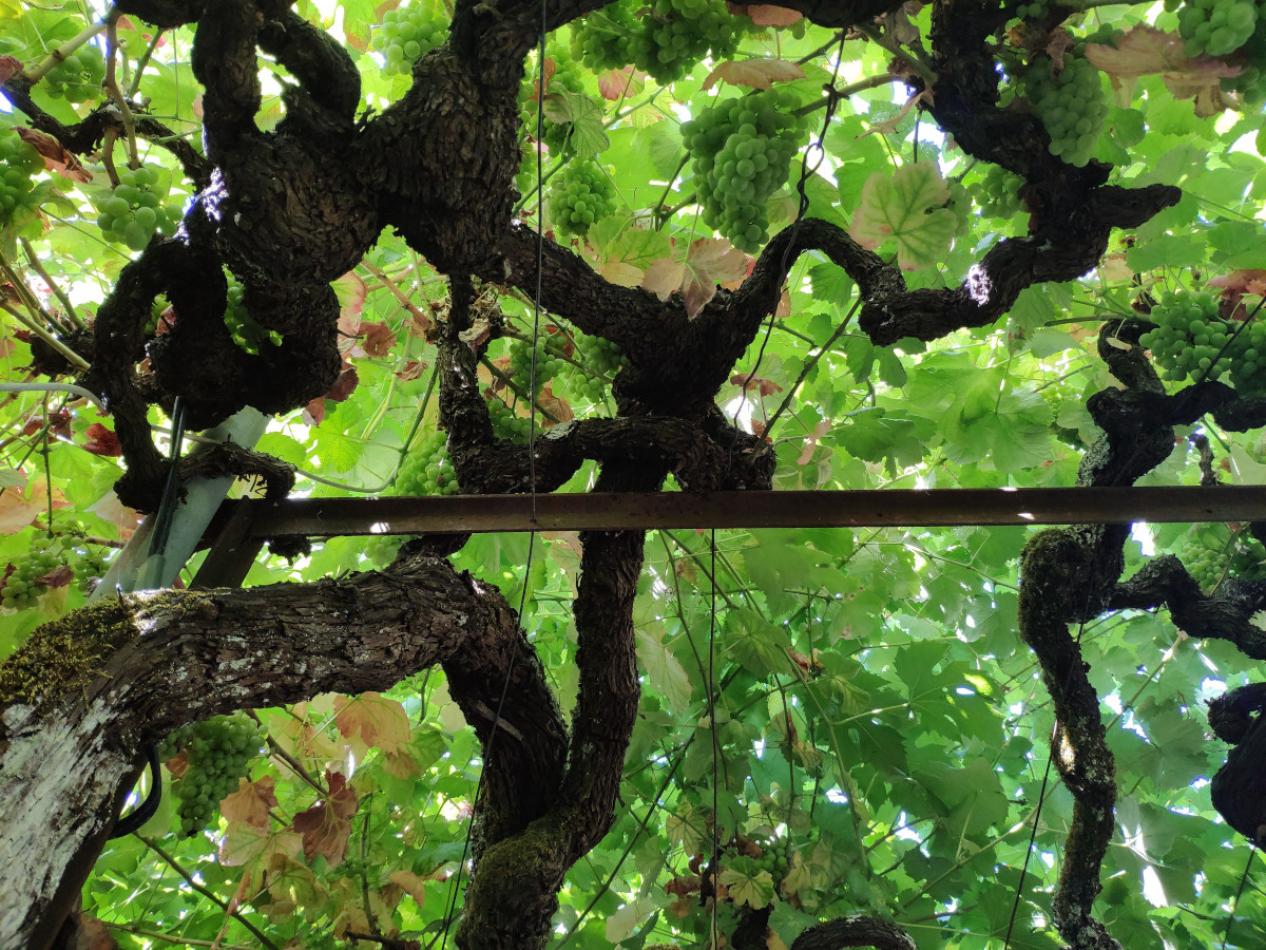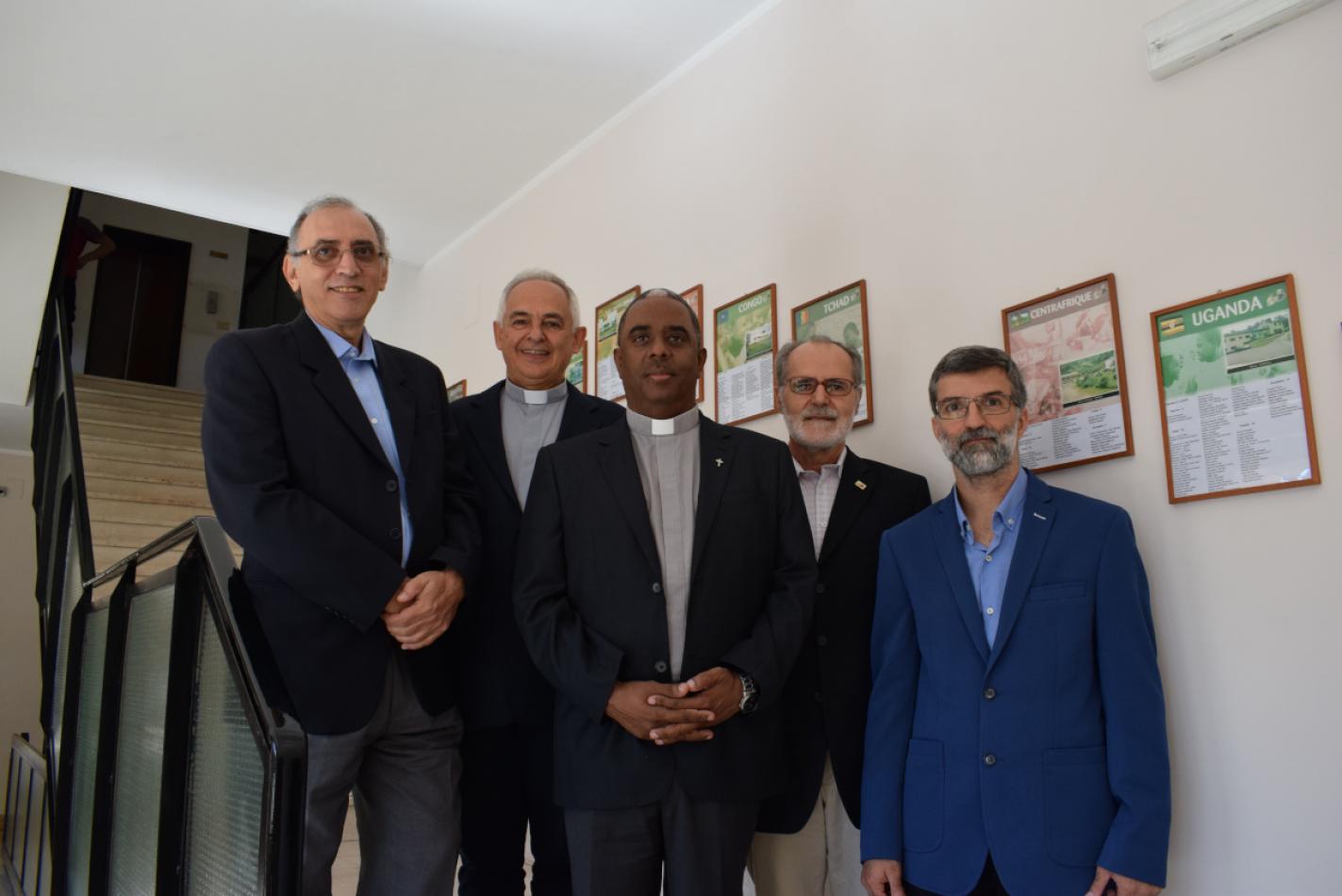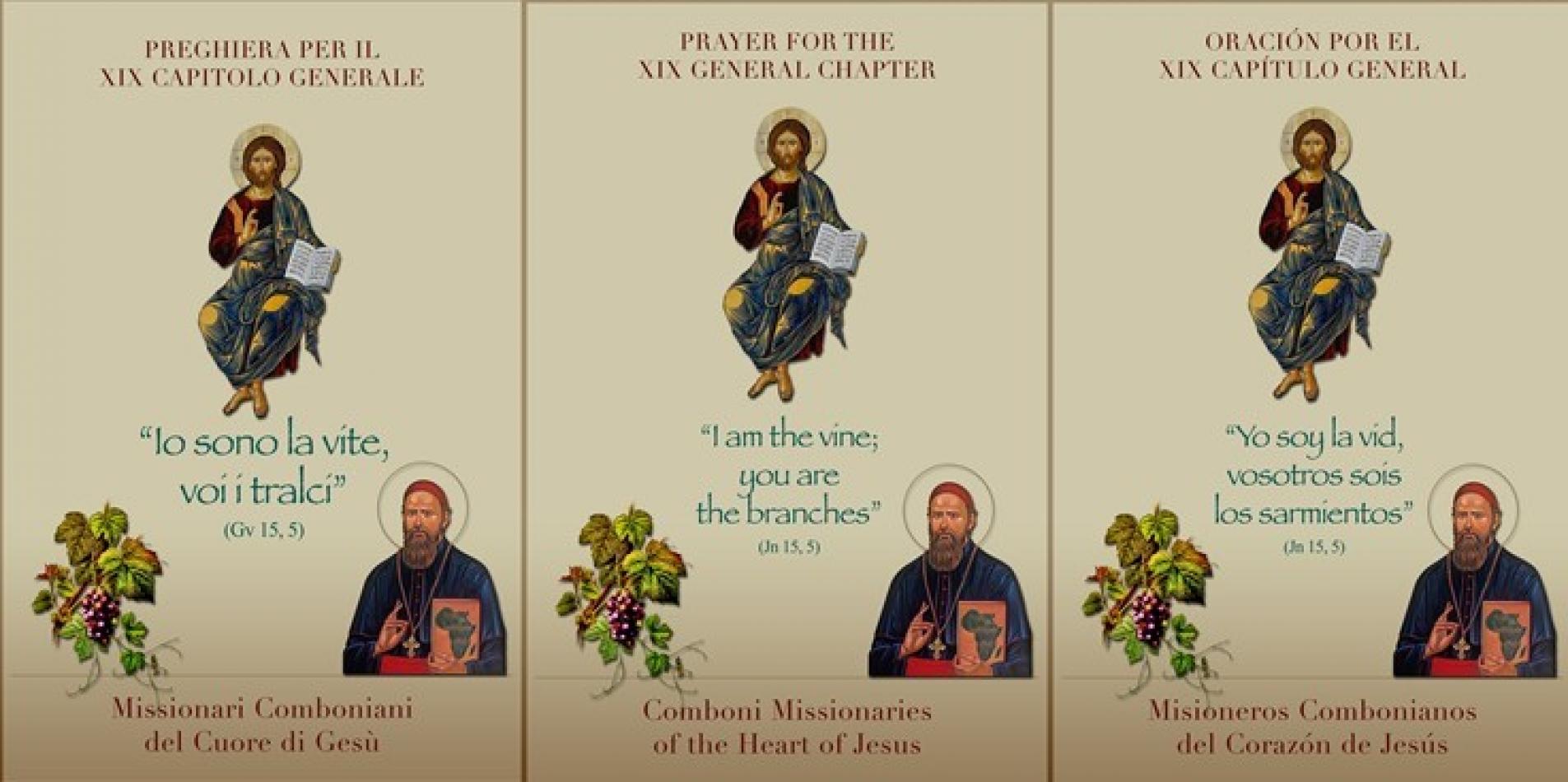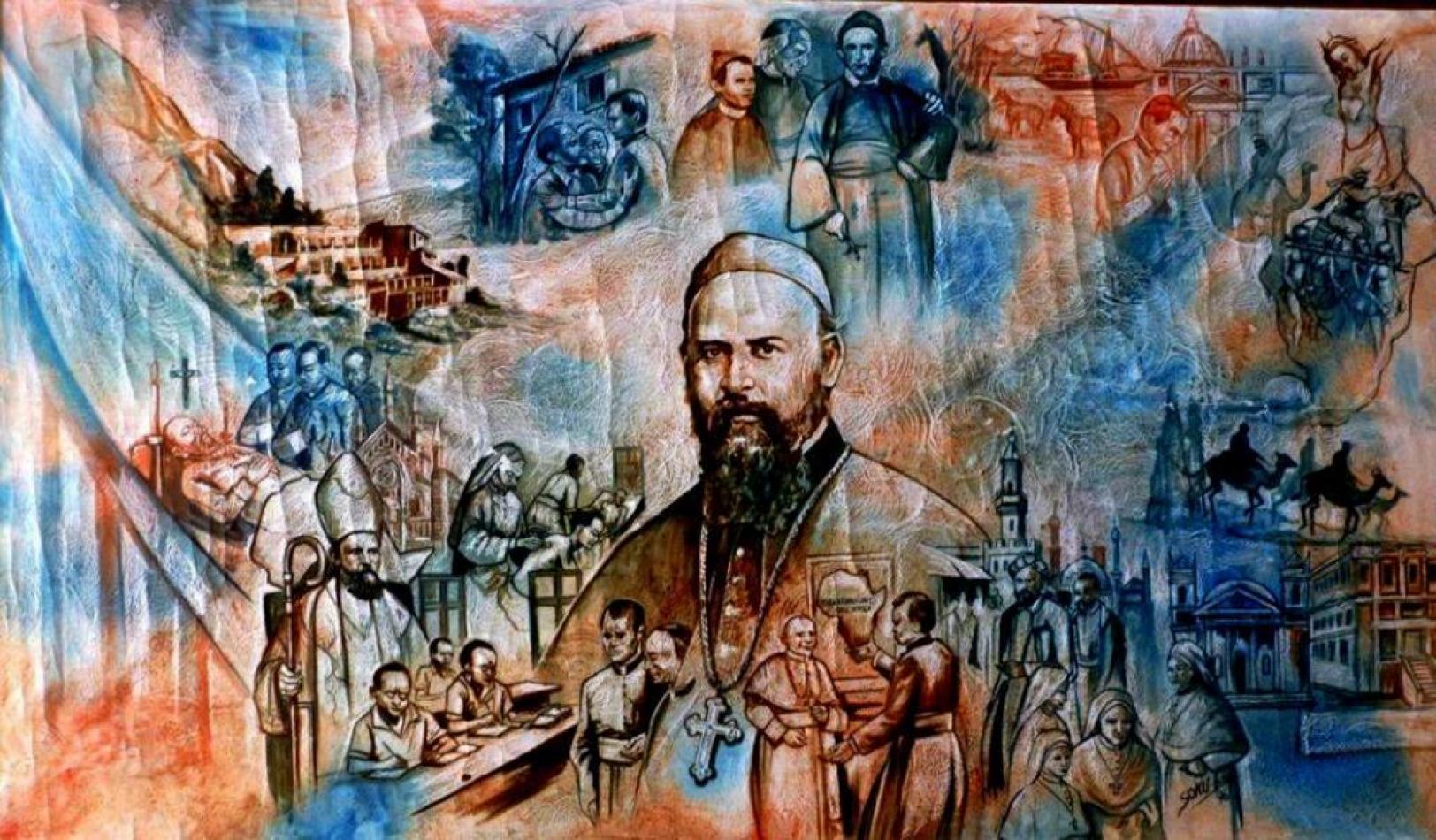Daniel Comboni
Comboni Missionaries
Institutional area
Other links
Newsletter
Tuesday, August 3, 2021
“The General Council invited the Comboni Missionaries to prepare themselves for the XIX General Chapter with the words of Jesus «I am the vine, you are the branches. Whoever remains in me, with me in him, bears fruit in plenty» in their heart. This icon is powerful and speaks volumes to me.” […]
BRANCHES OF THE SAME VINE
The General Council invited the Comboni Missionaries to prepare themselves for the XIX General Chapter with the words of Jesus “I am the vine, you are the branches. Whoever remains in me, with me in him, bears fruit in plenty” in their heart.
This icon is powerful and speaks volumes to me. I literally was born and grew up under the branches of grapevines, around the houses and over the public ways. Besides the grapes, they provided good shade.
The allegory brings us back to the essential of the missionary service of the Institute: we are called to Jesus to be sent out two by two (Mark 6:7), called to be there to go, to be disciples in order to be missionaries, missionary disciples in the footsteps of St. Daniel Comboni.
AN ANCIENT ICON
Jesus picks up the icon of the vine from the vast repository of images in the Jewish Scriptures that illustrate the intimate relationship between God and his people.
Psalm 80 — a prayer for the restoration of Israel — represents, in verses 9 to 16, the history of God's people as a vine that the Lord transplanted from Egypt: it grew leafy and then was devastated by the wild boar. It ends with this urgent and poignant prayer: “God Sabaoth, come back, we pray, look down from heaven and see, visit this vine; protect what your own hand has planted”.
Jesus explains his relationship with the Father and the disciples through the allegory of the vine (John 15:1-8): the Father is the vinedresser, He is the true vine and the disciples are its branches. A network of relationships, an intricate branching of vertical and horizontal relationships.
He says that the Vinedresser uses the Word as pruning shears so that the branches will bear many bunches: “Every branch in me that bears no fruit he cuts away, and every branch that does bear fruit he prunes to make it bear even more. You are clean already, by means of the word that I have spoken to you” (verses 2 and 3).
That is why lectio divina, the prayerful and dialogical reading of the Word of God — what the word says, what it says to me, what I say to it — appears as the prayer par excellence of the humble worker in the Lord's vineyard.
This venerable form of personal and community prayer fulfills the axiom evangelized in order to evangelize that Saint Paul VI formulated in Evangelii nuntiandi 15: “Evangelizing as she is, the Church begins by evangelizing herself”.
CONJUGATING THE VERB TO REMAIN
Then Jesus says: “I am the vine, you are the branches. Whoever remains in me, with me in him, bears fruit in plenty; for cut off from me you can do nothing” (verse 5).
Jesus uses the verb remain (=to be, to stay, to dwell) seven times in this allegory. To follow Jesus is to be with Him, because outside or apart from Him one does nothing. Neither outside nor beyond the community.
John presents in his first letter a reading key to conjugate the verb to remain: “His commandment is this, that we should believe in the name of his Son Jesus Christ and that we should love one another as he commanded us. Whoever keeps his commandments remains in God, and God in him. And this is the proof that he remains in us: the Spirit that he has given us” (1 John 3:23-24).
The grammar of Jesus’ followship, being with Him, is conjugated with the verbs believe (in Him) and love (the brothers).
There remains the temptation of an individualistic reading of the icon of the vine and the branches: my individual connection with Jesus.
Individualism is the greatest child of the Enlightenment — the “I think, therefore I am” closes the person in the vault of I-ism — and affects us as it affected the writing of the Rule of Life that is addressed in most cases to the missionary, to the individual and not to the missionaries, to the whole Institute. We are children of our time!
But the vines form a network of connections, a tangle of life, an affirmation of interdependence, of mutual belonging: some branches spring directly from the vine; most are connected to each other. In other words, the sap of the vine reaches the branches through a capillary network of connections. To the vine and to each other.
The allegory invites us to move beyond the intimate, individualistic interpretation of vocation and the utilitarian view of community as table, bed, and laundry. Kate Daniels states that “we all come home to one another to be healed and hailed”.
The call is unique and personal, but it happens in the context of a community, which is a covenant of life based on the mutuality of love.
Community life lived as an experience of mutual love is no longer a capital punishment — St. John Berchmans says that vita communis est mea maxima penitentia — but a better life. Cenacles of lovers and beloved simultaneously, learning to let ourselves be loved, admitting that we need tenderness. By tendency, we are self-sufficient and it is hard to recognize that we need each other.
The community is the laboratory where we test the vital force of the simplified proclamation that God loves you, that unique and essential love, where we experience God's loving kindness through the concrete love of the confreres so that we can then announce it and facilitate it, incarnate it with every creature, and especially with the poorest and most abandoned.
Pope Francis explains the warmth of missionary service in his Message for World Communications Day 2021: “The Good News of the Gospel spread throughout the world as a result of person-to-person, heart-to-heart encounters with men and women who accepted the invitation to ‘come and see’, and were struck by the ‘surplus’ of humanity that shone through the gaze, the speech and the gestures of those who bore witness to Jesus Christ”. Mystique of encounter is the missionary method par excellence.
WITHOUT ME YOU CAN DO NOTHING
The missionary service that the Institute develops through its members is participation in God's mission, incarnation of Trinitarian love in concrete historical and geographical moments. Therefore, the Institute cannot be perceived as a non-governmental organization — although we are considered as such, for example, in Ethiopia — and its action as a humanitarian exercise or a socio-political option.
Jesus sends his disciples because the Father sent him first: “As the Father sent me, so am I sending you” (John 20:21). And he explains the dynamic of this sending: “What I say, I say just as the Father said it to me.”
Pope Francis wrote in a message for the Sunday of the Word of God that “all evangelization is founded on the word heard, meditated, lived, celebrated and witnessed”.
Jesus shares the mission he received from the Father. And the love, too: “I have loved you just as the Father has loved me. Remain in my love” (John 15:9).
The paths of Jesus' missionary service are the paths of the missionary service of the Institute and of each member: we learn from Him how to say and how to do, how to love, because the Lord of the Mission is the only prototype we follow. In fact, as He followed the Father. It is not possible to be mission beyond Jesus or without Jesus. We need Him to operate, to bear much fruit: “cut off from me you can do nothing”.
We can measure mission in terms of buildings, statistics, mileage. Paul proclaims in the Song of Love that “Though I should give away to the poor all that I possess, and even give up my body to be burned — if I am without love, it will do me no good whatever” (1 Corinthians 13:3).
It is through the abundance of handcrafted love, given and received, shared, that we are missionary disciples, productive branches of the Father’s Vine.
José Vieira, MCCJ





